Chinese Warty Newt
- March 19, 2024
- 0 comment
The Chinese Warty Newt (Paramesotriton chinensis), a captivating species within the Salamandridae family, offers a unique glimpse into the rich biodiversity of East Asia, particularly within China. This article delves into the habitat, physical characteristics, behavior, conservation status, and ecological significance of the Chinese Warty Newt, shedding light on the need for heightened awareness and conservation efforts for this remarkable amphibian.

| Category | Details |
|---|---|
| Scientific Name | Paramesotriton chinensis |
| Common Names | Chinese Warty Newt |
| Classification | Kingdom: Animalia, Phylum: Chordata, Class: Amphibia, Order: Urodela, Family: Salamandridae |
| Size | Varies; typically robust in build |
| Weight | Varies with size, generally light due to small size |
| Lifespan | Can vary; specific lifespan data not provided, but similar species can live many years in the wild and potentially longer in captivity |
| Habitat | Prefers cool, clear waters in streams, ponds, and lakes, surrounded by forested areas |
| Distribution | Endemic to Eastern China |
| Diet | Carnivorous, feeding on small invertebrates such as worms, insects, and mollusks |
| Behavior | Nocturnal; engages in complex mating behaviors; utilizes bright colors for warning of toxicity |
| Reproduction | Lays eggs in aquatic environments on submerged vegetation; eggs develop into larvae that undergo metamorphosis into lung-breathing adults |
| Conservation Status | Not listed as endangered but populations are declining due to habitat destruction, pollution, and the illegal pet trade |
| Conservation Efforts | Includes habitat preservation, pollution control, and regulation of the pet trade |
| Ecological Significance | Indicators of healthy, unpolluted water ecosystems; play a critical role in the food web as predator and prey |
| Challenges | The main challenges include habitat destruction, pollution, illegal pet trade, and ensuring populations are sustainable. Conservation efforts are crucial for their survival. |
Physical Characteristics
Paramesotriton chinensis is distinguished by its robust body, textured skin covered in wart-like protrusions, and a striking color palette that ranges from dark browns to vibrant oranges and yellows, particularly evident in males during the breeding season. This vibrant coloration serves as a warning to predators about the toxic secretions they produce, which can be harmful if ingested. They possess a flat head, small eyes, and a pronounced tail, which aids in their aquatic navigation.
Coloration
The dorsal (upper) side of these newts ranges from dark brown to black, often with patterns or spots in contrasting colors like orange, yellow, or red, which can serve as camouflage or warning signals to predators. The ventral (lower) side is usually lighter, with some species displaying vibrant colors.


Facial Features
The head is broad and flat with a somewhat blunt snout, allowing for a wide field of vision and efficient hunting of prey. Eyes are large and positioned towards the top of the head, enabling them to watch for predators or prey even when partially submerged.
Limbs
Their limbs are relatively short but strong, with well-defined toes that aid in gripping surfaces both in water and on land. During the breeding season, males may develop rough patches, or nuptial pads, on their forelimbs to help grasp females.


Tail Morphology
The tail is a critical feature for their aquatic lifestyle, used for propulsion in water. In some species, the tail may have a distinct coloration or pattern, which could be used for signaling during social interactions or as part of their aposematic strategy.
Habitat and Distribution
The Chinese Warty Newt thrives in the diverse aquatic landscapes of Eastern China, where it seeks out the cool, pristine waters of streams, ponds, and lakes, often nestled within verdant, forested terrains.

This preference for clear, unpolluted waters not only underscores the newt’s role as an indicator of ecological health but also highlights the importance of such habitats in offering shelter and abundant food sources. The lush surroundings serve as both a sanctuary from predators and a rich hunting ground, enabling these newts to play a pivotal role in their ecosystems. Their distribution across such habitats emphasizes the critical need to preserve these natural water bodies, ensuring the continued survival of the Chinese Warty Newt and the myriad other species that depend on these environments for their existence.
Behavior and Diet
Chinese Warty Newts are nocturnal creatures, emerging at night to feed and explore their environment. Their diet primarily consists of small invertebrates, such as worms, insects, and mollusks, which they hunt with precision. During the breeding season, males display a range of behaviors to attract mates, including visual displays and the secretion of pheromones.
Aquatic Adaptation
Members of the Paramesotriton genus are highly adapted to life in water, exhibiting behaviors like swimming and diving, with some species showing a preference for still or slow-moving waters.
Nocturnal Activity
These newts are primarily nocturnal, becoming active at night to hunt for food, mate, or explore their habitat, which helps reduce predation risk.
Territoriality
During the breeding season, males can become territorial, displaying aggressive behaviors towards other males to defend their chosen mating areas or territories.
Courtship Displays
Male newts perform elaborate courtship rituals to attract females, which may include visual displays, body posturing, and the release of pheromones to entice potential mates.
Carnivorous Feeding
They exhibit predatory behavior, feeding on a variety of small invertebrates such as worms, insects, and mollusks, using a sit-and-wait or active hunting strategy.
Aposematic Coloration Display
When threatened, some species display bright colors on their undersides as a warning to predators about their toxicity, a behavior known as aposematism.
Climbing
Although primarily aquatic, these newts can climb on rocks and vegetation near water bodies, especially during rainy or humid nights, in search of food or new habitats.
Hibernation/Aestivation
Depending on their environment and climate, some Paramesotriton species may undergo periods of dormancy to survive harsh conditions, such as cold winters or dry seasons.
Skin Secretion
Like many amphibians, Paramesotriton species possess glands in their skin that can secrete substances. These secretions can be toxic to predators and may also have antimicrobial properties.
Parental Investment
While not common in all species, there are instances of parental behaviors such as guarding eggs until they hatch, which helps increase the survival rate of the offspring.
Egg Laying
Females lay eggs individually or in small clusters on aquatic vegetation, and the eggs are often camouflaged to protect them from predators.
Metamorphosis
The young undergo a metamorphosis from aquatic, gilled larvae to lung-breathing adults, a critical transition that allows them to exploit different ecological niches throughout their life cycle.
Reproduction
Reproduction in aquatic environments showcases a fascinating cycle of life, particularly observed in amphibian species. Within these watery realms, females embark on the vital task of laying eggs, carefully attaching them to submerged plants and vegetation.

These eggs are not left defenseless; they are encased in a protective jelly-like substance that safeguards them against predators and the elements. As development progresses, these eggs hatch into larvae, which possess gills, allowing them to breathe underwater and thrive in their aquatic nursery. However, their existence undergoes a dramatic transformation during metamorphosis, a pivotal phase that marks their transition into adulthood. Throughout this process, they shed their gills for lungs, adapting to breathe air and preparing for a life both in and out of the water. This metamorphosis not only signifies their complex developmental stages but also underlines their remarkable ability to adapt to changing environments, showcasing the intricate balance of life within aquatic ecosystems.
Conservation Status
The conservation status of the Chinese Warty Newt has raised concerns, primarily due to habitat destruction, pollution, and the illegal pet trade. Although not currently listed as endangered, their populations are declining, prompting conservationists to call for protective measures. Efforts include habitat preservation, pollution control, and stricter regulations on the pet trade to ensure their survival for future generations.
Ecological Significance
The Chinese Warty Newt plays a pivotal role in its ecosystem, acting as both predator and prey within its food web. Their health and abundance are indicators of water quality and ecosystem stability, making them essential for ecological monitoring and conservation efforts.
Different Species of Chinese Warty Newt
Paramesotriton caudopunctatus (Spotted Warty Newt)
Distinctive for its dark brown or black body dotted with lighter, often orange spots, this species inhabits cool, clear streams and ponds in forests. The spots serve as camouflage against the forest floor and aquatic vegetation.


Paramesotriton deloustali (Deloustal’s Newt)
This species is notable for its robust body and striking coloration, which ranges from dark browns to vibrant oranges, especially during the breeding season. It prefers rocky streams and pools within limestone karst regions.
Paramesotriton fuzhongensis (Fuzhong Warty Newt)
Identified for its preference for slow-moving or still waters in dense forests, it has a unique coloration that blends seamlessly with the leaf litter and mud of its habitat, aiding in camouflage.


aramesotriton guangxiensis (Guangxi Warty Newt)
Native specifically to the Guangxi Zhuang Autonomous Region, this species is adapted to life in cool, shaded waters. Its skin secretes a toxin that deters predators, a common trait among warty newts.
Paramesotriton hongkongensis (Hong Kong Newt)
Found in Hong Kong and parts of southern China, this newt has a distinctive orange to red belly, which it displays when threatened to warn predators of its toxicity. It thrives in a variety of aquatic habitats, from streams to temporary ponds.

Conclusion
The Chinese Warty Newt, with its distinctive appearance and behaviors, contributes significantly to the biodiversity and ecological balance of Eastern China’s aquatic environments. Protecting this species and its habitat is crucial for maintaining the health of these ecosystems. Through increased awareness, research, and conservation initiatives, we can ensure the survival of the Chinese Warty Newt and the myriad of life that depends on the same environments. As stewards of the planet, it is our responsibility to protect these remarkable creatures and the delicate ecosystems they inhabit.
Frequently Asked Questions (FAQs)
- What is the Chinese Warty Newt?
The Chinese Warty Newt (Paramesotriton chinensis) is a species of salamander in the Salamandridae family, known for its distinctive wart-like skin texture and its habitat in Eastern China. - Where can the Chinese Warty Newt be found?
This newt is endemic to Eastern China, inhabiting cool, clear waters in streams, ponds, and lakes surrounded by forested areas. - What does the Chinese Warty Newt eat?
It is carnivorous, feeding on small invertebrates such as worms, insects, and mollusks. - How does the Chinese Warty Newt reproduce?
Reproduction involves laying eggs in water on submerged vegetation. The eggs then develop into larvae, which eventually undergo metamorphosis to become lung-breathing adults. - Is the Chinese Warty Newt endangered?
While not currently listed as endangered, their populations are declining due to factors like habitat destruction, pollution, and the illegal pet trade, raising concerns about their conservation status. - What are the main threats to the Chinese Warty Newt?
The primary threats include habitat destruction, water pollution, and the impacts of the illegal pet trade. - How long can a Chinese Warty Newt live?
Specific lifespan data may vary, but similar species can live many years in the wild and potentially longer in captivity. - What conservation efforts are in place for the Chinese Warty Newt?
Conservation efforts focus on habitat preservation, pollution control, and regulating the pet trade to protect these newts. - Why is the Chinese Warty Newt significant to its ecosystem?
As both predator and prey, they play a crucial role in their food web and are indicators of water quality and ecosystem health. - Can I keep a Chinese Warty Newt as a pet?
While it is possible, it’s important to ensure that any pet newt is obtained legally and ethically, considering their conservation status. Prospective owners should also be prepared to mimic their natural habitat and diet to keep them healthy.

Jack Williams
Forestry AuthorI'm Jack Williams, Jack Williams, my expertise in welding and generator technologies extends beyond traditional boundaries. With over 13 years of experience, I have honed my skills in a range of heavy-duty equipment, focusing particularly on welding and power generation. My passion for nature and commitment to ecological sustainability inform my approach to work. I emphasize safety, efficiency, and staying current with technological advancements. Beyond my technical skills, I am dedicated to sharing knowledge and fostering environmental awareness, aiming to contribute positively to both the welding and generator operation industries.

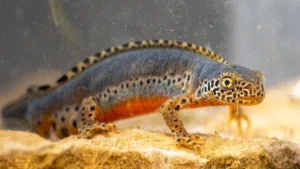

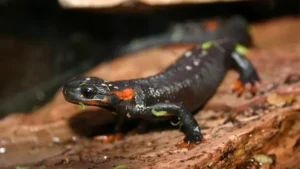

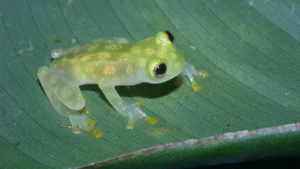
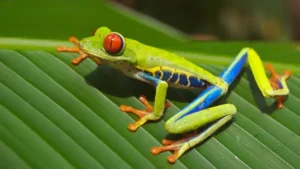
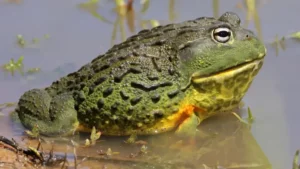
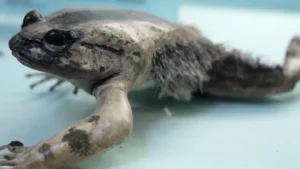

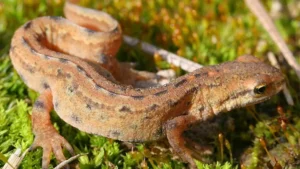
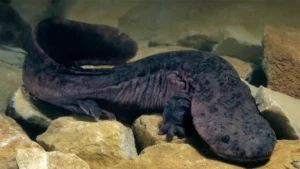

Leave your comment